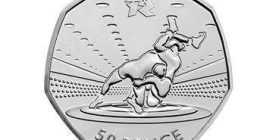
U.S. retailers took in about as much money in April as they did in March. You should actually be impressed.
The Commerce Department on Friday reported that retail sales—spending in stores, at restaurants and online—was unchanged last month from March, adjusting for seasonal swings. That was short of the 0.8% gain economists were looking for, but then again, the March sales increase from a month earlier was revised to 10.7% from 9.8%.
That March gain was fueled by the arrival of the latest round of stimulus checks from the government which, in concert with the easing of the pandemic, gave many Americans the wherewithal and the willingness to spend more.
An analysis conducted by Bank of America economists on their firm’s credit and debit-card data shows that it was poorer people—those that by nature have the most unmet needs—who increased their spending the most in March. They have since settled down.
Yet for sales to merely be flat after a surge like March’s, particularly in the midst of a monthslong recovery, is somewhat remarkable. Compare it with, for example, the pattern that followed the Sept. 11, 2001 attacks. That October, sales rose 6.7% from a month earlier, then fell 2.5% in November and kept dropping over the next two months.
Moreover, sales seem likely to resume climbing this month as people’s comfort in returning to some of their pre-pandemic activities continues to build. A consumer survey conducted by Cowen over the 10 days ended May 3 found that Americans’ willingness to do things such as enter stores and attend church continued to build over a month earlier, as did their willingness to get vaccinated.
Since that survey, regulators have authorized the use of the Pfizer and BioNTech vaccine for children ages 12 to 15, and the Centers for Disease Control and Prevention has said that fully vaccinated people can go maskless in most settings.
The bigger question for investors shouldn’t be whether spending will continue to climb in the months ahead but how fast it will climb.
The speed of the recovery will of course be dictated by how the pandemic progresses, and how willing many Americans will be to tap into savings they have built up over the course of the past year. The strength of the job market will matter, too, as will the severity of supply-chain bottlenecks—it is hard to buy a car when there are none on the lot.
Then there is the continuing issue of where people will direct their spending. Will, for example, online retailers experience a hangover as more shoppers return to malls?
There are things out there to worry about, but the April retail sales report isn’t one of them.
Write to Justin Lahart at [email protected]
Copyright ©2020 Dow Jones & Company, Inc. All Rights Reserved. 87990cbe856818d5eddac44c7b1cdeb8









